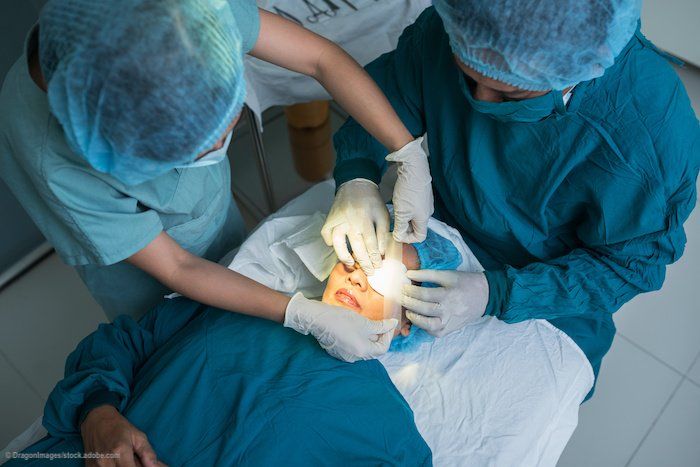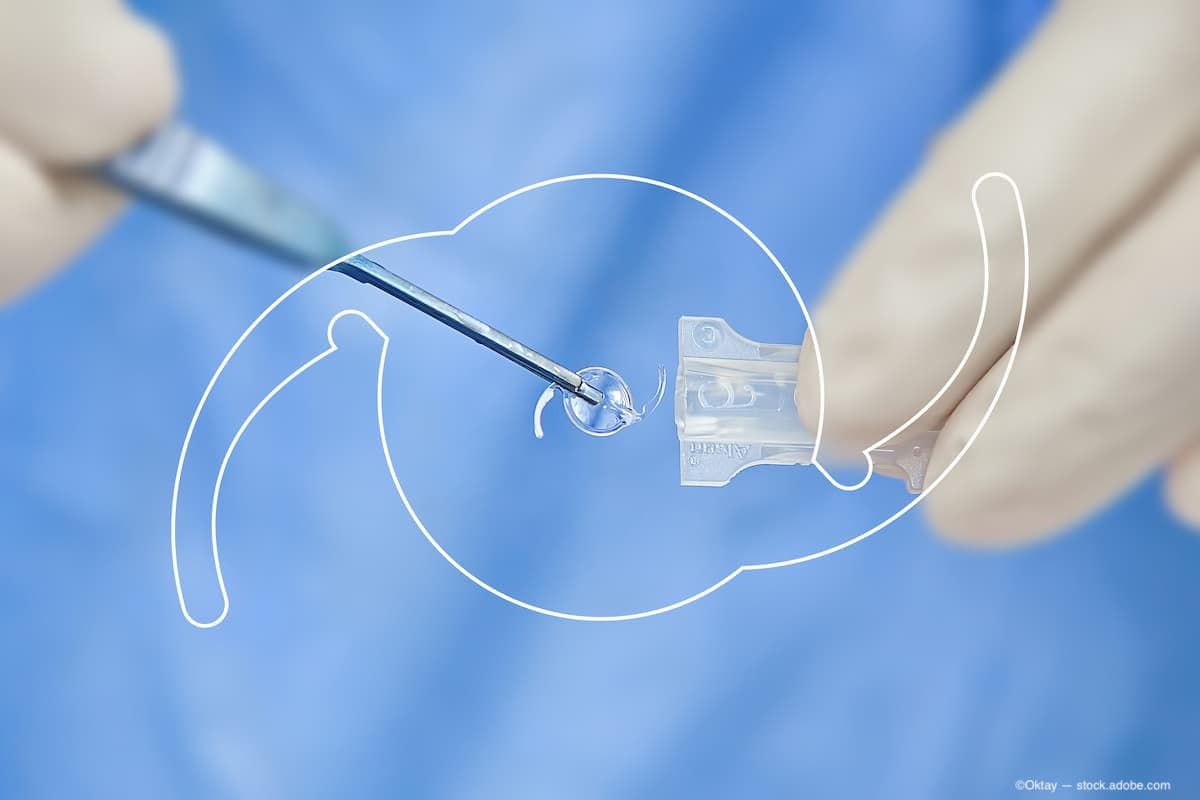Article
Examining comparable surgical methods for IOL dislocation
Author(s):
Scleral suturing of a dislocated IOL and exchange of the original lens with an iris-claw IOL were comparable for achieving good visual outcomes with low complication rates.

A complication of implantation of an intraocular lens (IOL) in the capsular bag is dislocation of the IOL, which can happen years after an uncomplicated cataract surgery.
While the 10-year cumulative incidence of dislocation thankfully is low, an estimated 0.5% to 1.0%, the frequency with which this occurs is sizable because of the high rate at which cataract surgeries are performed and the increased life expectancies of patients.
The average time between IOL implantation and dislocation is 7 to 10 years, Marius Dalby and colleagues pointed out. The notable culprits that are involved in IOL dislocation are pseudoexfoliation, high myopia, and previous vitrectomy.
To date, investigators have not reached a consensus on how to address the problem of a dislocated IOL. IOL repositioning was evaluated in one prospective study that included in-the-bag and out-of-the bag cases of dislocations with the findings of satisfactory improvement in vision and low complication rates, but the study considered a mean follow-up period of only 17 months (range, 1-55 months).
Because no information regarding long-term follow-up was available, Dr. Dalby and associates undertook a clinical trial to evaluate the long-term follow-up of patients with late in-the-bag IOL dislocations. The investigators compared scleral repositioning of the IOL with IOL exchange with a new iris-claw IOL being substituted for the original lens. The main study outcomes were the distance-corrected visual acuity (DCVA) and long-term complications at the two-year time point.
RELATED CONTENT: More stable surgery may help better predict effective IOL position
Study methods and results
Over a three-year period, 104 patients with dislocations of their in-the-bag IOLs were randomized to undergo either scleral suturing of the original IOL (n=54) or to IOL exchange with a new retropupillary fixated iris-claw IOL (n=50) in this prospective, randomized, parallel-group clinical trial.
The same surgeon performed all of the surgeries. The repositioning surgery involved looping of a 10-0 prolene suture around each IOL haptic and fixation to the scleral wall. The exchange procedure involved explantation of the IOL capsule complex through a 5.5-millimeter scleral pocket frown incision.
An aphakic iris-claw IOL (Verisyse, VRSA54, Abbott Laboratories) was then introduced and retropupillary fixated to the iris, according to Dr. Dalby, who is a PhD candidate from the Department of Ophthalmology, Oslo University Hospital, Oslo, Norway.
Eighteen patients could not participate after 2 years because of severe illness, another 18 died, one declined to participate, and one moved out of the country. The average age of the 66 patients who remained in the study was 79.6 years versus 85.2 years for those who left the study.
Examinations were conducted preoperatively and then at six months and one and two years postoperatively. During these examinations, two ophthalmologists and optometrists measured the CDVA and intraocular pressure and conducted slit-lamp examination of the anterior and posterior segments and slit-lamp photography of the anterior segment. The examiners any degree of IOL decentration compared with baseline and graded the IOLs on a scale of one to four, with one indicating a small decentration with a gap between the pupillary edge and the IOL with the optic still covering the visual axis and four indicating complete IOL dislocation.
RELATED CONTENT: Intraoperative aberrometry offers pros, cons for IOL surgical decisions
CVDA
The investigators defined CDVA worsening as a decrease of 0.10 or more in the logarithm of the minimum angle of resolution (logMAR) VA. The investigators also recorded any complications that developed during the first two postoperative years.
Dr. Dalby reported that two years postoperatively, the mean CDVAs were 0.20 ± 0.29 logMAR and 0.22 ± 0.30 logMAR, respectively, in the IOL repositioning group and the exchange group, a difference that did not reach significance (P = 0.69).
Compared with baseline, 88% of the patients in both groups achieved a CDVA that was equal to or better. A CDVA of 20/40 or better was achieved by 76% of patients. Cystoid macular edema developed in four (12%) eyes in the repositioning group and in five (15%) eyes in the exchange group (P = 0.72). The IOL dislocated again in one eye in each group.
Five (15%) patients and one (3%) in the repositioning group and exchange group, respectively, had grade 1 IOL decentration. Retinal detachment or endophthalmitis did not develop in either group. Dr. Dalby and associates pointed out that an important implication in this study was that these patients had an overall good visual prognosis after they underwent surgery and the degree of the IOL dislocation at baseline, which ranged from grades 1 to 3, did not affect the long-term visual outcome.
The authors concluded, “There were no significant differences in visual acuity between IOL repositioning and IOL exchange two years after surgery.
The two methods were equally efficient and safe from a long-term perspective and are both considered acceptable treatments.”
The investigators published their findings in the American Journal of Ophthalmology (doi: https://doi.org/10.1016/j.ajo.2019.05.030). The authors have no conflicting relationships related to this subject matter.





